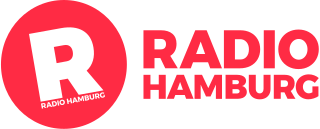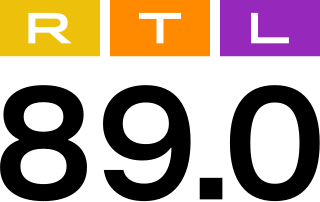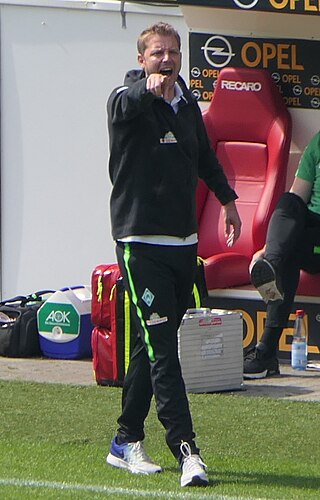
Radio Hamburg is a private commercial radio station based on Hamburg, Germany. Established in 1986, it was the first private radio station in Hamburg and one of the first private radio stations in West Germany.

ARD is a joint organisation of Germany's regional public-service broadcasters. It was founded in 1950 in West Germany to represent the common interests of the new, decentralised, post-war broadcasting services – in particular the introduction of a joint television network.

Johan Cédric Micoud is a French former professional footballer who played mostly as an attacking midfielder.

Norddeutscher Rundfunk, commonly shortened to NDR, is a public radio and television broadcaster, based in Hamburg. In addition to the city-state of Hamburg, NDR broadcasts for the German states of Lower Saxony, Mecklenburg-Vorpommern and Schleswig-Holstein. NDR is a member of the ARD organisation.
Radio Bremen, shortened to RB is Germany's smallest public radio and television broadcaster and the legally mandated broadcaster for the city-state Free Hanseatic City of Bremen. With its headquarters sited in Bremen, Radio Bremen is a member of the consortium of German public broadcasting organizations, ARD.

Astra Digital Radio (ADR) was a system used by SES for digital radio transmissions on the early Astra satellites, using the audio subcarrier frequencies of analogue television channels. It was introduced in 1995. As of February 2008, there were still 51 stations transmitting in this format. ADR ceased on 30 April 2012 when analogue broadcasts on Astra 19.2°E ended.
Sender Freies Berlin was the ARD public radio and television service for Berlin from 1 June 1954 until 30 April 2003. On 1 January 1992, SFB became the public broadcaster for the whole of reunited Berlin. However, SFB had long had a significant audience in East Berlin for some time before German reunification. On 1 May 2003 it merged with Ostdeutscher Rundfunk Brandenburg to form Rundfunk Berlin-Brandenburg.

Bremen, officially the City Municipality of Bremen, is the capital of the German state of the Free Hanseatic City of Bremen, a two-city-state consisting of the cities of Bremen and Bremerhaven. With about 577,000 inhabitants, the Hanseatic city is the 11th-largest city of Germany and the second-largest city in Northern Germany after Hamburg.

Bremerhaven is a city on the east bank of the Weser estuary in northern Germany. It forms an exclave of the city-state of Bremen. The River Geeste flows through the city before emptying into the Weser.

89.0 RTL is a German radio channel whose studios are located in Halle (Saale). It aims at the 14-29 age bracket.

Zervas and Pepper are a musical duo from Cardiff, Wales, who formed in late 2007. They play as a two piece outfit or a full band, and have a strong and growing presence on the UK-wide live circuit and international airtime, including appearances at theatres and festivals such as Glastonbury Festival and Green Man Festival, and regular national radio appearances.

Florian Kohfeldt is a German football manager for Darmstadt 98.
Bremen Eins is a German, public radio station owned and operated by the Radio Bremen (RB). It launched on 23 April 2001, succeeding Hansawelle and Radio Bremen Melodie.

Bremen Zwei is a German public radio station owned and operated by Radio Bremen (RB). It broadcasts a culture and information-based format with a wide music selection, similar to Bayern 2. Unlike other ARD cultural stations, it does not air classical music.
Bremen Next is a German, public, youth-oriented radio station owned and operated by Radio Bremen (RB). Aimed at an audience aged 15 to 25, it broadcasts a rhythmic CHR format with mostly hip hop and electronic music and makes heavy use of social media.

Radio Bremen Melodie(Radio Bremen 3 – Melodie) was a German, public radio station owned and operated by the Radio Bremen (RB). It broadcast an information and entertainment programme, dominated by German schlager music.
Hansawelle(Radio Bremen 1 – Hansawelle) was a German public radio station owned and operated by Radio Bremen (RB) from 1946 until 30 April 2001. Until 1952 it was Radio Bremen's only channel.

Radio Bremen 2 was a German public radio station, owned and operated by Radio Bremen (RB). It used to broadcast a culture and information-based format, featuring classical and modern music.
The European Piano Competition Bremen is an international piano competition held every 2 years in Bremen. It was founded in 1987 by Radio Bremen. The competition is open to pianists from all over Europe, including the musicians from CIS states, Turkey and Israel.














